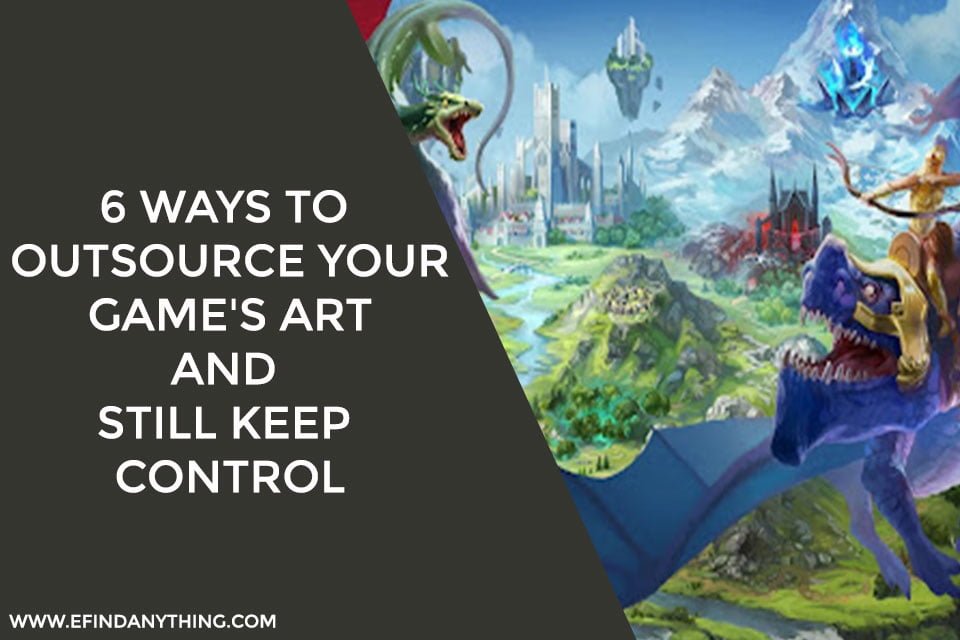
Table of Contents
Find an art outsourcing studio that you like and that is a good fit for your project
Outsourcing studios usually have their area of expertise, and that is probably the first thing you will be looking for: your contractor needs to specialize in the type of game art you want them to do. Where to find outsourcing art for games? The studios have portfolios of work they have done for their clients, which they put on their official websites, and creative platforms like Behance. That is how you can see if the art they do speaks to you and decide on whether to continue looking into that particular studio. We often look for images first to get the information we need as fast as possible and that’s ok.
Apart from the portfolio, you should pay close attention to the list of the companies the studio provided art outsourcing services to and the reviews these clients left. This is the best way to evaluate the trustworthiness of the studio. Many outsourcing studios also have blogs where they talk about their creative process and the specifics of the projects they have worked on, as well as write on various industry topics. The blog part and its quality can be a supporting argument towards or against the reputability of the studio.
Outline the project requirements and expectations
One of the best things you can do to make the collaborative process efficient is to prepare a brief with precise requirements for when you first contact an outsourcing studio for an estimate. Listing and describing all the assets you are looking to produce, as well as noting the specific parameters and the art style you need them to be in shows your colleagues that you value their time. It also saves you a lot of the highly inefficient back-and-forth. There are many project brief guides and samples available online for both 2D and 3D tasks that can help you at this stage.
The evaluation an outsourcing studio provides will contain the information on the approximate cost of the project, timeframes, the tech stack they intend on using, etc. If you are happy with the estimate, you need to provide further specifications for the project while the studio gives you more organizational details, and informs you on the artists that will be involved. When all the terms and conditions are discussed, you sign a contract, and the production begins.

Give the studio creative freedom within reason
Complex creative projects are enriched by multiple points of view and the creative freedom of the people involved. Good game artists have extensive experience in the field and employ their creativity in every project, so there is no reason to hyper-control their choices and micro-manage the team. As long as the work meets the quality expectations and all the specifications you provided the studio with, it will make a great contribution to your project. However, you can always ask to tweak something specific while providing feedback and requesting revisions.
Stay in touch with the studio: provide feedback and make sure they are on track
Although, technically, you can be very little involved in the process, it is much better to keep in touch with the studio. You will have a dedicated project manager responsible for navigating this process and the channels of communications you discussed at the start of your cooperation. The studio should provide you with regular updates as they go through the art production, and your task will be to give them feedback so that the game artists can adjust their course and move forward. You can also request changes if necessary. By staying in touch with the studio you can make sure the project progresses at the right speed and in the right direction.
Pay the studio on time and in full
When all the work is done, you will need to formally accept it. Before that, however, you have the chance to ask for any revisions within the terms of the contract.
Some contracts involve a per-hour pay for the work of the game art designers and managers involved, while others have fixed costs where all expenses must fall within a specific budget. Whatever the terms and conditions of payment are, it goes without saying that they must be observed.
Give credit where credit is due
There is an ongoing fight in the game industry for properly crediting the people and organizations involved in the development of games. The International Game Developers Association (IGDA) published crediting guidelines that can help you to get the specifics right. To put it simply, credits matter and game art outsourcing studios must be credited properly.





